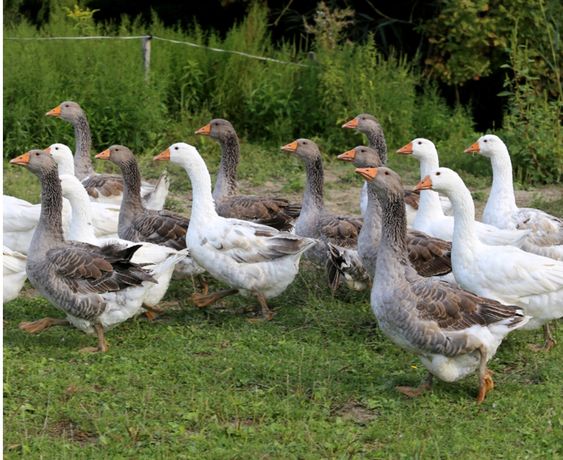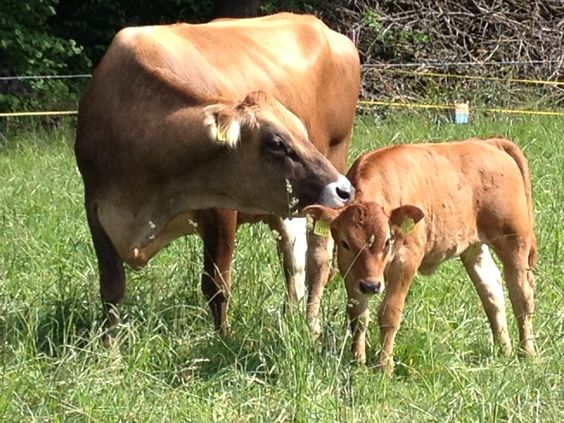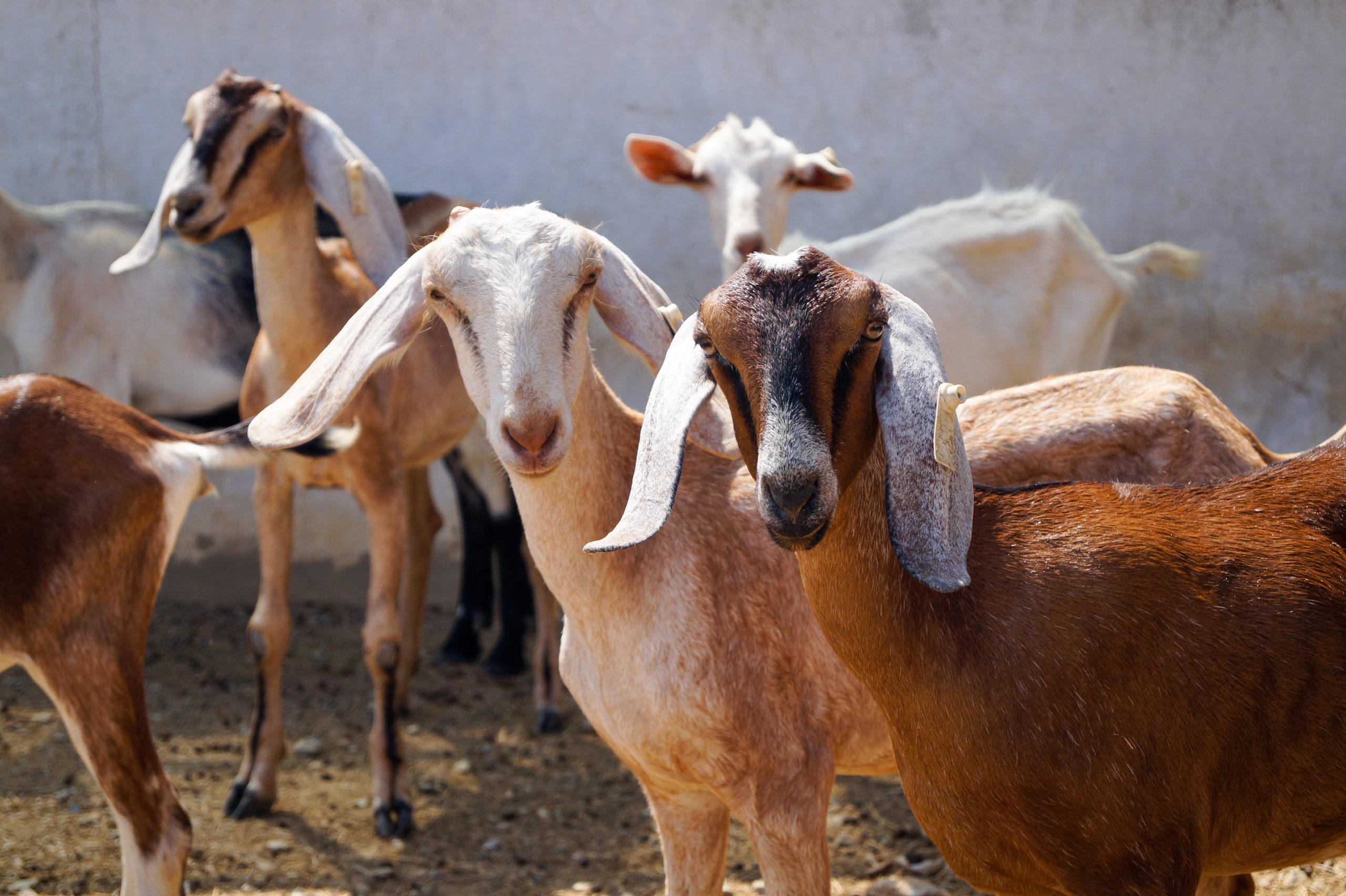Goose Rearing: A Comprehensive Guide to Successful Goose Farming
Goose rearing, also known as goose farming, is a practice that has gained prominence due to the bird’s adaptability, diverse product offerings, and the unique advantages it provides. Unlike other poultry, geese are hardy, efficient grazers and versatile producers. They can thrive in a range of environments and offer a variety of products including meat, eggs, feathers, and more. This comprehensive guide will explore the intricacies of goose rearing, including its benefits, goals, practical ideas for improvement, and potential areas for further research.
Goose Rearing
Goose rearing involves the breeding, management, and care of geese for various purposes. Geese are often chosen for their robustness, adaptability to different environmental conditions, and their ability to contribute to pasture management. The practice can range from small-scale hobby farming to large commercial operations, each with its unique requirements and management practices.
Types of Geese
- Meat Geese: Breeds such as the Toulouse and Embden are primarily reared for their meat, known for its rich flavor and tenderness.
- Egg Geese: The Chinese goose, known for its prolific egg-laying capabilities, is often chosen for egg production.
- Feather Geese: Certain breeds are selected for their high-quality feathers and down, which are used in premium bedding and apparel.
- Ornamental Geese: Some geese are kept for decorative purposes or as pets, providing aesthetic and companionship value.
Benefits of Goose Rearing
- Diverse Product Range: Geese are valuable for producing various products:
- Meat: Goose meat is a gourmet item in many cultures, prized for its rich flavor and tenderness.
- Eggs: Goose eggs are larger than chicken eggs and are used in specialty dishes and baking.
- Feathers: Goose feathers, particularly down, are used in high-quality bedding and clothing for their insulating properties.
- Manure: Goose manure is rich in nutrients and can be used as an effective organic fertilizer.
- Efficient Grazers: Geese are highly effective at managing pastureland. Their grazing helps control weed growth and maintains the health of grasslands. They can graze on a variety of plants, including grasses, weeds, and even certain crops, which can reduce the need for chemical herbicides and fertilizers.
- Cost Efficiency: Geese are economical to raise. Their ability to graze reduces feed costs, as they can obtain a significant portion of their nutrition from natural forage. This reduces the reliance on commercial feed and lowers overall production costs.
- Hardiness and Adaptability: Geese are hardy birds that can withstand a range of environmental conditions. They have a high tolerance for cold weather and can thrive with minimal shelter. Their adaptability makes them suitable for various farming systems, from free-range to more intensive housing setups.
- Low Maintenance: Geese require less intensive care compared to other poultry species. They are generally robust and can manage their own health with minimal intervention. This can reduce the time and effort needed for their care and management.

Goals of Goose Rearing
- Maximizing Meat Production: A primary goal is to produce high-quality goose meat. Farmers focus on achieving optimal growth rates, ensuring that geese reach their market weight efficiently. This involves careful management of feeding, housing, and overall flock health.
- Increasing Egg Yield: Another important goal is to enhance egg production. Geese typically lay eggs seasonally, so farmers aim to maximize egg yield through effective breeding practices and management techniques.
- Improving Feather Quality: High-quality feathers and down are sought after for various products. Farmers focus on maintaining the health and well-being of geese to ensure the production of premium feathers.
- Promoting Sustainable Farming: Goose rearing aims to incorporate sustainable practices. This includes efficient use of resources, minimizing environmental impact, and ensuring animal welfare. Sustainable practices help maintain the long-term viability of goose farming.
- Diversifying Income Sources: By producing a range of products, farmers can diversify their income streams. This reduces dependence on a single market and can provide stability and increased profitability.
Practical Ideas for Improving Goose Rearing Practices
- Enhanced Nutrition: Developing a balanced and nutritious feeding program is crucial for optimal growth and production. This involves supplementing natural forage with high-quality feed that meets the nutritional needs of geese. Regularly evaluating and adjusting the feed formula can enhance performance and health.
- Improved Housing: Providing appropriate shelter is essential for the well-being of geese. Housing should offer protection from extreme weather conditions and predators while ensuring proper ventilation and space. Properly designed housing can also facilitate easier management and reduce the risk of disease.
- Breeding Programs: Implementing selective breeding programs can enhance desirable traits in geese, such as growth rates, egg production, and feather quality. Genetic improvement through breeding can lead to better overall flock performance and higher product quality.
- Health Management: Regular health checks, vaccinations, and parasite control are vital for maintaining flock health. Developing a comprehensive health management plan can prevent diseases, manage health issues effectively, and ensure the well-being of geese.
- Environmental Enrichment: Providing environmental enrichment, such as access to water sources and natural foraging opportunities, can improve the quality of life for geese. Enrichment reduces stress and promotes natural behaviors, leading to healthier and more content birds.
- Record Keeping: Maintaining detailed records of production, health, and breeding activities is important for informed decision-making. Tracking data helps monitor flock performance, identify trends, and make necessary adjustments to improve management practices.
- Training and Education: Ongoing education and training for farm staff can improve management practices and ensure that the latest techniques and technologies are utilized. Investing in training helps maintain high standards of care and management.
Advantages of Goose Rearing
- Versatility: Geese are versatile birds that can be raised for multiple purposes, including meat, eggs, feathers, and as ornamental pets. This versatility allows farmers to explore various markets and product lines, maximizing their income potential.
- Economic Value: The diverse range of products offered by geese can provide significant economic value. Farmers can benefit from premium markets for goose meat, specialty eggs, and high-quality feathers. This can lead to increased profitability and financial stability.
- Environmental Benefits: Geese contribute positively to pasture management and environmental sustainability. Their grazing habits help control weeds, reduce the need for chemical inputs, and maintain healthy grasslands. This aligns with sustainable farming practices and reduces the environmental footprint of farming operations.
- Low Environmental Impact: Geese have a lower environmental impact compared to some other livestock species. Their ability to graze on natural forage and their efficient feed conversion reduce the need for concentrated feed and minimize waste production.
- Cultural Significance: In many cultures, geese hold traditional and cultural value. They are featured in various cuisines and ceremonies, adding cultural richness to their rearing. This cultural significance can enhance the value of goose products and create unique marketing opportunities.
Topic Suggestions for Further Research
- Genetic Improvement in Geese: Investigate the latest advancements in genetic improvement for geese. Explore the potential benefits of selective breeding for enhancing meat quality, egg production, and feather characteristics. Research could focus on the effectiveness of different breeding techniques and their impact on flock performance.
- Impact of Goose Grazing on Pasture Health: Examine how goose grazing affects pasture health, soil quality, and weed control. Research could include comparative studies of pasture management with and without geese and the long-term benefits of integrating geese into grazing systems.
- Sustainable Goose Farming Practices: Explore sustainable farming practices for goose rearing, including waste management, resource efficiency, and environmental conservation. Assess the effectiveness of different approaches in promoting sustainability and reducing the environmental impact of goose farming.
- Market Trends for Goose Products: Analyze current market trends and consumer preferences for goose meat, eggs, and feathers. Research could identify potential opportunities for niche markets and value-added products, as well as strategies for expanding market reach.
- Health Management Strategies for Geese: Study effective health management strategies for preventing and managing diseases in geese. Research could focus on vaccination protocols, biosecurity measures, and the role of veterinary care in maintaining flock health.
- Economic Viability of Goose Rearing: Assess the economic viability of goose rearing compared to other poultry and livestock options. Research could include cost-benefit analyses, profitability assessments, and the impact of market fluctuations on goose farming.
- Cultural and Historical Aspects of Goose Rearing: Investigate the cultural and historical significance of goose rearing in different regions. Explore traditional practices, culinary uses, and the role of geese in cultural ceremonies and festivals.

Economic Considerations in Goose Rearing
Understanding the economic aspects of goose rearing is crucial for evaluating its viability and profitability. This section explores key economic considerations, including cost factors, revenue streams, and financial management strategies.
Cost Factors
- Initial Investment: The initial investment in goose rearing includes costs related to acquiring breeding stock, setting up housing and equipment, and establishing feed and health management systems. Initial costs can vary depending on the scale of the operation and the level of technology implemented.
- Feed Costs: Feed constitutes a significant portion of ongoing expenses in goose rearing. Implementing precision feeding and optimizing feed use can help manage and reduce feed costs. The availability and cost of feed ingredients can also impact overall expenses.
- Labor Costs: Labor costs include expenses related to managing and caring for geese, including feeding, health checks, cleaning, and maintenance. Efficient management practices and automation can help reduce labor requirements and associated costs.
- Health and Veterinary Costs: Regular health management and veterinary care are essential for maintaining flock health. Costs may include vaccinations, medications, and veterinary consultations. Investing in preventive measures can help reduce the likelihood of disease outbreaks and minimize treatment costs.
- Infrastructure and Equipment: Costs for infrastructure and equipment include housing construction, feeding systems, water supply, and waste management systems. Upgrading to modern and efficient systems can improve productivity and reduce long-term costs.
Revenue Streams
- Meat Sales: Revenue from meat sales is a primary income source for goose rearing operations. The value of goose meat can vary based on market demand, quality, and processing methods. Exploring niche markets and premium products can enhance profitability.
- Egg Sales: Goose eggs can be sold directly to consumers or through specialty markets. The price of goose eggs is typically higher than chicken eggs, providing a valuable revenue stream.
- Feather and Down Sales: The sale of feathers and down can generate additional income. High-quality feathers are in demand for bedding and apparel, and developing a market for these products can contribute to overall profitability.
- Manure Sales: Goose manure can be sold as organic fertilizer or used on-farm to improve soil health. Utilizing manure effectively can create an additional revenue stream or reduce input costs.
Financial Management Strategies
- Budgeting and Financial Planning: Developing a detailed budget and financial plan helps manage costs and maximize profitability. Regularly reviewing financial performance and adjusting strategies based on market conditions can improve financial outcomes.
- Cost Control: Implementing cost control measures, such as optimizing feed use, reducing waste, and investing in efficient technologies, can help manage expenses and enhance profitability.
- Market Research: Conducting market research to identify demand trends, pricing strategies, and potential customers can help optimize revenue streams and make informed business decisions.
- Diversification: Diversifying product offerings and exploring new markets can reduce financial risk and increase revenue opportunities. Offering value-added products or expanding into niche markets can enhance overall profitability.
- Risk Management: Implementing risk management strategies, such as insurance and biosecurity measures, can protect the business from potential losses due to disease outbreaks, market fluctuations, or environmental factors.
Goose rearing presents a range of benefits and opportunities for farmers. With its diverse product offerings, economic value, and environmental benefits, goose farming is a versatile and rewarding agricultural practice. By focusing on key goals such as maximizing meat production, increasing egg yield, and improving feather quality, farmers can achieve success and profitability. Implementing innovative practices, staying informed about the latest research, and addressing challenges proactively can further enhance the efficiency and sustainability of goose rearing operations. As interest in sustainable and diverse farming practices grows, goose rearing remains a valuable and promising component of modern agriculture.






